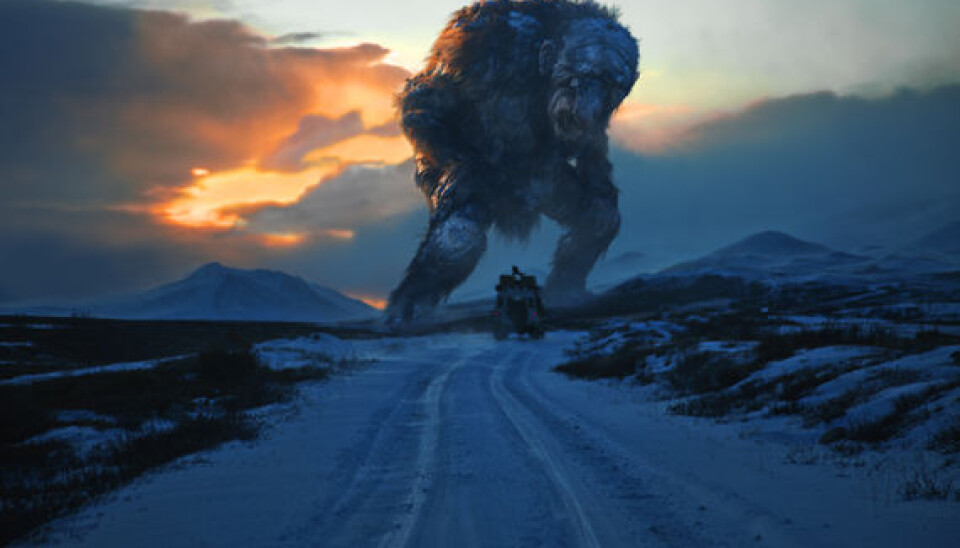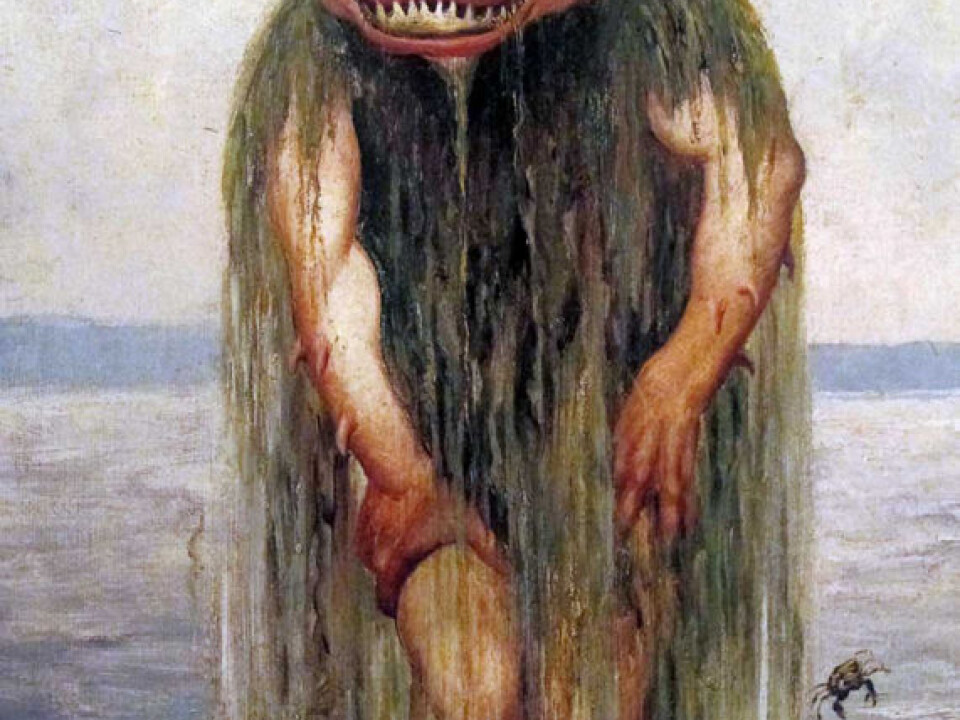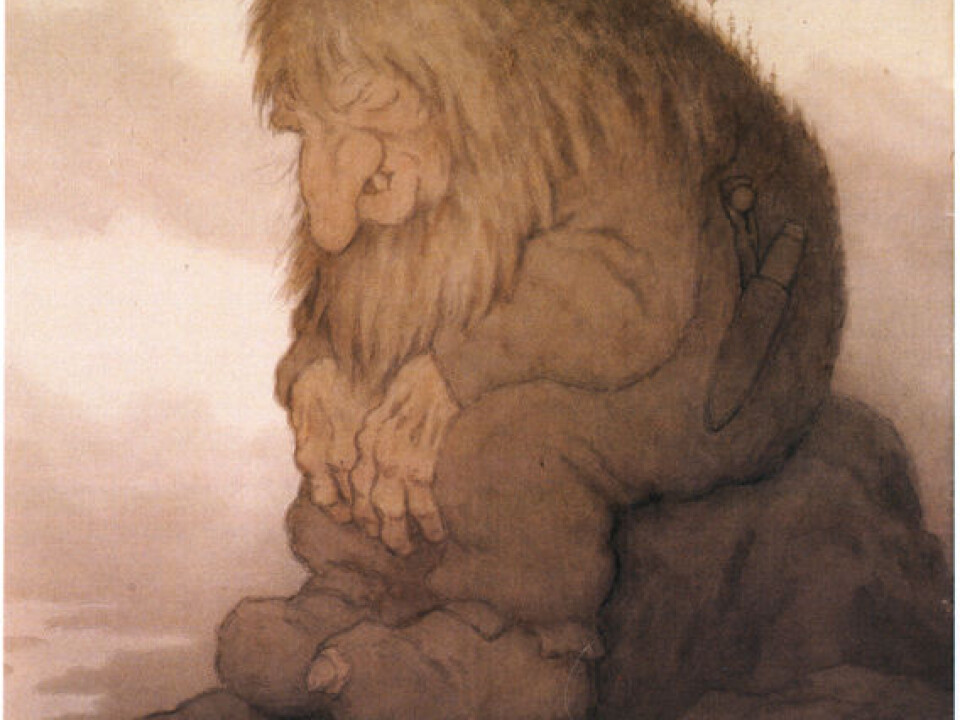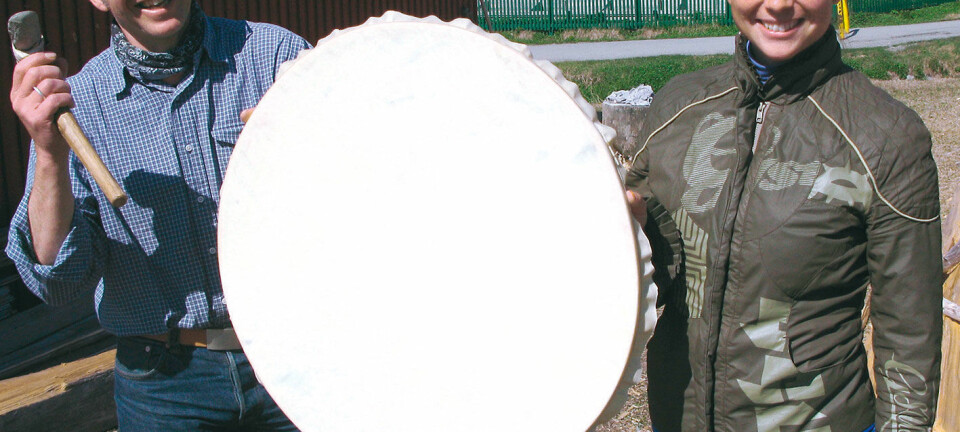An article from University of Tromsø – The Arctic University of Norway

The return of folklore
Why are gnomes and trolls suddenly back in the limelight?
Denne artikkelen er over ti år gammel og kan inneholde utdatert informasjon.
“History becomes legend, legend becomes myth,” said Galadriel in the film version of The Lord of the Rings from 2001.
And during that first decade in the new millennium, the interest in fantasy, legends and myths exploded in the western world. Harry Potter, The Lord of the Rings, True Blood, and most recently Game of Thrones, are all largely based on old folklore. Surprisingly much of it includes elements from our own Norse mythology and Scandinavian folklore.
Yet, it wasn’t until last year that Norwegian filmmakers started to catch up with the trend, when no less than two films based on our own traditions were released: Troll Hunter and Thale (the latter about a Norwegian wood nymph – the hulder).
Marit Anne Hauan, folklorist and director of Tromsø Museum, thinks it is great to bring the old folktales back to life.

“The global interest among young people in the old mythical creatures is a clear reaction to their parents’ generation’s lack of interest. In the ‘70s and ‘80s it became fashionable to have a very rational worldview. There was no room for inexplicable or supernatural phenomena,” she says.
“They demanded scientific answers to questions, and were sceptical about the ‘big stories’. What we see now is a clear backlash against this world view. Today, the very rational way of being is seen as rather uncreative,” she says.
Taking back the trolls
Both Troll Hunter and Thale were, perhaps surprisingly, relatively successful outside of Norway. Troll Hunter even topped the DVD bestseller lists in the UK when it came out.

“These films are Norwegian filmmakers’ reaction to the international trend. They feel that they have something to contribute with as well. This makes me think that they have to be pretty fond of their culture, and that moves me a little. They find joy in the old traditions, and share that joy in such a positive, funny and absurd way with Troll Hunter,” she smiles.
And maybe it was about time. Trolls seem to have lost some of their ability so scare these days. Especially if you picture them as garishly coloured troll dolls, or cosy souvenirs.
“It’s about bringing them back to where they belong. They are terrifying creatures, and shouldn’t decorate mantles,” she laughs.
However, folklore and mythical creatures used to play a much bigger part in society, and were seen as a more tangible and real part of the natural world.
“Today we live in a thoroughly regulated society, where we have to abide by numerous official laws and regulations. In earlier times, legends played much of the same role,” explains Hauan.
Subterranean eco-warriors
Legends and myths regulated the relationship between humans and nature, and the rules of human society. It was vital to not take more from nature than you needed, or you would upset a supernatural people believed to live underground. And these subterranean people were known to extract their revenge on greedy humans. In this way they were almost the eco-worriers of yore.
The subterraneans also served as a way to uphold moral standards and values. Young girls who brought livestock out to summer pastures, were often subjected to improper advances by the subterraneans.
The vast numbers of these stories says something about the cultural importance of “preserving your purity” as a young girl in this society. The tales served as a warning against speaking to strangers, and a warning against giving in to temptation, Hauan explains.
Moral tales
Myths also helped maintain the set standards and roles in society. If you strayed from the norm, you risked serious consequences.
A clear example is the belief in utburden. If an unbaptized baby was put out to die by its parents, it would return as a vengeful spirit. Unbaptized children could not enter heaven.
“One myth tells the a story of a woman who was on her way to her own wedding, when an utburd showed up and clung to her bridal veil. The moral is that old sins never quite disappear, so it is always better to just stay on the straight and narrow path to begin with,” says Hauan.
Other myths
Other myths served as explanations for occurrences or mysteries for which there were no other answers. Children with disabilities were often regarded as changelings, where the subterraneans had switched the human child with one of their own, during an unguarded moment.
These children often suffered horribly, because people thought the only way to get their real child back was to treat the imposter child so badly that the supernatural mother would return to swap the children back.
Old, but not always Norwegian
Many of the mythical creatures can be traced very far back in time, often all the way to the Viking age. Still, many of them are less Norwegian than we might like to think. For instance, the relatives of trolls can be found in the giants of Celts and the titans of the Greeks.
One exception is the Stallo, the brutal archenemy of the Sami people. This character is only found in the Sami world of ideas.
“The Stallo is often described as being similar in appearance to the Norwegian government officials who came to collect taxes. They constituted a threat to Sami society, and developed into a mythological creature that the Samis usually outwitted,” says Hauan.
Even though today’s society relies on science to explain things we don’t understand, the belief in some sort of magic is not completely gone.
Football players have their own rituals for luck before an important game, a school girl might avoid stepping on cracks in the road, or even the expression “knock on wood” are examples of how we have retained magic in our everyday lives.
Some folkloric creatures seem to have a longer shelf life than others. It is probably more likely that you will encounter like-minded Norwegians if you say that you believe in ghosts, than if you admit that you might have seen a goblin last time you had to fetch something in the garden shed.
--------------------------------------
Read the Norwegian version of this article at forskning.no































